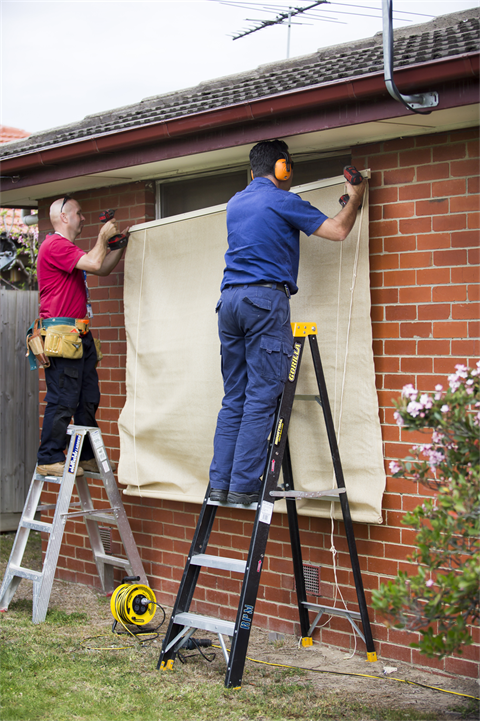Climate Action

The Earth's natural greenhouse effect keeps our planet at a temperature suitable for life. For millions of years, naturally occurring gases like water vapour, carbon dioxide, and methane have helped regulate this balance, making Earth a habitable place.
However, human activities—such as burning fossil fuels, large-scale agriculture, and deforestation—have significantly increased greenhouse gas levels beyond what occurs naturally. This has intensified the greenhouse effect, leading to global warming and long-term shifts in climate patterns.
As temperatures rise, we are already experiencing changes in weather, ecosystems, and local environments. These shifts will continue, impacting communities, economies, and natural habitats.
At Hume City Council, we are committed to addressing climate change through local initiatives, policy actions, and community engagement. Below, you’ll find information on the impacts of climate change, what we’re doing to adapt and mitigate its effects, and how you can contribute to a more sustainable future—both at home and in the community.
The Climate Impacts
Climate change is already impacting the Hume region in Victoria, with projections indicating more severe effects in the coming decades. The region has experienced prolonged drought conditions and severe weather events. making it particularly vulnerable due to its demographic make-up, biodiversity values and large rural areas.
Key climate change projections for Hume:
- temperature increase:
- under a business-as-usual scenario: Average temperatures are likely to rise by approximately 1.5 °C (1.1 to 1.9 °C range) by 2050 and by approximately 3.1 °C (2.2 to 3.6 °C range) by 2090.
- under a low emissions scenario: Average temperatures will likely increase by approximately 1.1 °C (0.5 to 1.5 °C range) by 2050 with little subsequent warming.
- rainfall changes:
- overall decrease in rainfall, particularly in autumn, winter, and spring.
- more frequent and intense downpours, despite the general drying trend.
- extreme weather events:
- increase frequency and intensity of storms, strong winds, hail and heavy rainfall.
- harsher fire weather and longer fire seasons.
Secondary impacts of climate change:
Beyond direct effects, climate change is likely to cause broader environmental, social and economic challenges:
- health risks:
- higher rates of heat stress, respiratory problems, and mental health impacts.
- increase in infectious disease spread due to changing patterns of mosquito populations.
- agricultural disruption:
- some areas may become unsuitable for farming, leading to increase crop damage risks.
- altered ecosystems:
- changes to biological cycles could reduce pollination rates, affect food production.
- biodiversity loss.
- economic strain:
- rising energy costs due to increase demand of cooling.
- higher insurance premiums related to climate risks.
- climate migration:
- population relocating due to climate pressures in their home regions.
For more information, visit the .
Council's Action
Our Climate Action Plan is a key to our climate change response. It aims to enhance and expand action in response to the urgency and magnitude of the current climate situation.
Climate Action Plan 2023–2028.pdf(PDF, 8MB)
Council's Carbon Emissions Reporting
Each year Council reports under the National Greenhouse and Energy Reporting Scheme (NGERS) on our carbon emissions. The below document outlines Councils emission breakdown as per the NGERS guidelines and key actions Hume City Council is taking to reduce our greenhouse emissions.
2024/25
2023/24
Climate Change Pledge
Council has endorsed the Climate Change Pledge via the Letter to the Minister for Energy Environment and Climate Change.
Renewable energy
Council is investing in renewable energy, installing solar PV systems and solar hot water systems on Council buildings. These include leisure centres, pre-schools and community centres.
To supplement these renewable energy sources, Council uses 100 per cent GreenPower electricity for all Council buildings and street-lighting. GreenPower is a government accredited program for purchasing greenhouse neutral electricity from renewable sources. Find out more on the GreenPower website.
Greenhouse Action
Council is a member of the Northern Alliance for Greenhouse Action (NAGA), a network of local councils to share information, coordinate emission reduction and adaptation activities and cooperate on research and development of innovative projects. Eight other local Councils are also members of NAGA: the Cities of Banyule, Darebin, Manningham, Melbourne, Moreland, Whittlesea and Yarra, and Nillumbik Shire Council.
What can an Individual & Community Do?
The things we eat, buy and dispose of as waste can also result in greenhouse gas emissions that contribute to climate change. Here are some ways to reduce your impact:
- upgrade your home's gas appliances to electric.
- install rooftop solar to start generating your own clean energy.
- advocate for climate action.
- start by having a conversation with friends and family members about climate change.
- eat less red meat and dairy foods (cows and sheep produce methane, a potent greenhouse gas).
- choose local and less-processed foods.
- buy durable products that will last.
- compost or worm farm your food scraps or put them in your food and garden bin (green bin).
- reduce food waste by planning meals and buying only what you need.
- buy appliances with the highest star ratings – they will be cheaper and more efficient to run.
- ask your electricity provider about switching to GreenPower.
- draught proof your doors and windows and check your insulation.
Find out more ways to reduce your consumption and correctly dispose of your waste here.
Find out how the Hume Home Energy Upgrades program can help you make your home more energy-efficient.